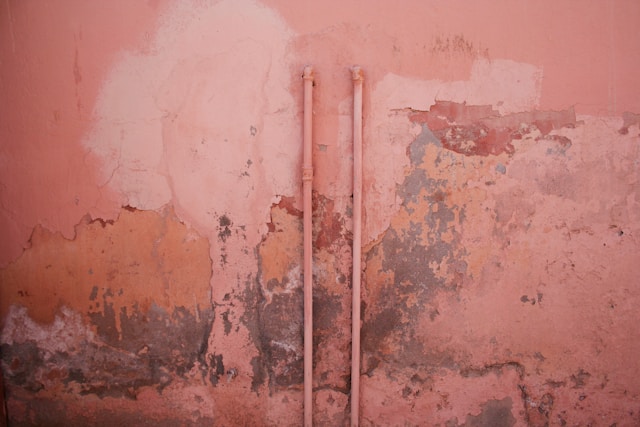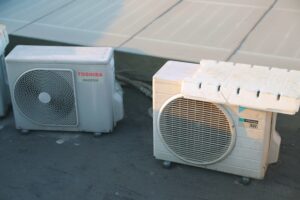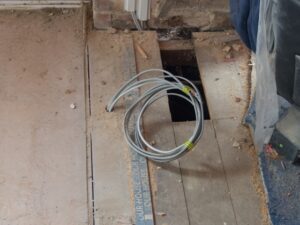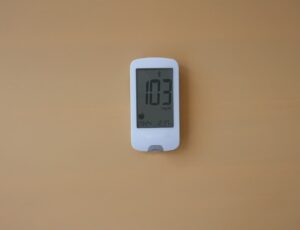Have you ever found yourself in the middle of a DIY project, only to realize that you need to locate a pipe inside your wall?
It may seem like a daunting task at first, but with the right techniques and tools, it’s easier than you think. Finding pipes in your walls without causing damage is possible, and all it takes is a bit of patience and the right approach.
One of the best tools for this job is a stud finder with a pipe-detection feature. It accurately locates pipes in the wall without the need for any invasive methods, ensuring you can pinpoint the pipe’s location safely.
You might also notice visible indicators like plumbing fixtures—sinks, faucets, and toilets can often give you clues as to where the pipes are running behind the wall.
But sometimes, just using your ears can help.
Have you ever turned on the water and noticed that quiet hum or rush of water?
That sound can often guide you straight to the pipe’s location, especially when you’re in a calm, quiet environment.
If you’re not feeling confident in your DIY skills, don’t hesitate to call in the professionals. At Excel Mechanical, our team brings years of expertise to both residential and commercial plumbing services.
We aim to provide you with customized solutions that not only meet your plumbing needs but also stay within your budget, ensuring peace of mind.
In this blog, we will cover:
- The most effective methods for locating pipes in your walls
- The tools that make finding pipes easier and safer
- How to avoid costly mistakes while searching for pipes
Let’s break this down!
Understanding Pipes in Construction
Pipes in construction are crucial for delivering water and removing waste. They come in different materials and layouts, influencing your home’s plumbing efficiency and safety.
Types of Pipes Used in Walls
First things first, let’s discuss the types of pipes used in walls.
- Copper pipes are popular because of their durability and resistance to corrosion. They are often used for water supply lines.
- PEX pipes, made of flexible plastic, are useful because they are easy to install and resistant to freezing.
- PVC pipes are mainly employed for drainage and waste and are known for being lightweight and easy to work with.
Each type has different costs and benefits.
Copper offers long-lasting results, while PEX provides flexibility and lower costs. PVC is lightweight and non-corrosive, making it ideal for waste removal.
Choosing the right pipe depends on function, budget, and installation requirements.
Common Layouts for Plumbing in Residential Buildings
In most homes, plumbing layouts are designed to maximize efficiency. These layouts usually include sections for kitchens and bathrooms, where most water fixtures are located.
- Main Stack Layout: This features a large vertical pipe connecting with smaller pipes to transport waste and bring water in.
- Trunk-and-Branch Layout: This setup uses a main “trunk” line for cold and hot water, sending smaller branches to fixtures throughout the home.
Understanding layouts helps pinpoint pipe locations in walls. It’s also essential to realize the relationship between different pipes and water fixtures.
Safety Considerations Before Beginning
Before you start searching for pipes in your walls, it’s crucial to consider safety. This involves ensuring the wall structure is sound and checking for any hidden hazards like electrical wires.
Verifying Wall Integrity
Begin by examining the wall for any cracks or signs of damage.
Look for uneven surfaces or bulges. These can indicate underlying issues such as water damage or structural problems. Testing the wall’s strength can prevent accidents during drilling or cutting.
Use a stud finder to locate support beams. This tool helps to avoid damaging the structure. If you are uncertain, hiring a professional ensures safety. Our team has expertise in handling both plumbing and structural concerns.
Locating Power Lines and Other Hazards
Electrical wires in the wall pose a significant risk.
- Use a voltage detector to check for live wires.
- Avoid areas where switches, outlets, or lights are located—these spots commonly house wiring.
- Be wary of other hazards, such as gas lines, especially in kitchen areas.
- Gas leaks can be dangerous.
It is advisable to consult or hire professionals. Our services offer reliable and safe detection methods, reducing risks for homeowners and businesses.
Initial Detection Methods
Finding hidden pipes in walls requires careful methods. Relying on visual checks and sounds can help you locate pipes without causing unnecessary damage.
Visual Inspection Techniques
Start by closely inspecting the wall surfaces.
Look for clues like patches, lines, or stains that might suggest a hidden pipe. Water stains are a strong sign of a nearby pipe leak.
Use a flashlight to check for any subtle irregularities. Sometimes, a bulge or dent on the wall might indicate a pipe is present. This can guide your search without additional tools.
A stud finder with an AC wire mode can also help. While mainly for studs, it may hint at pipe locations if it detects unusual density changes in the wall.
Auditory Clues to Find Hidden Pipes
Listen carefully to the sounds on your wall.
Turn on the water and follow the sound of the water flow to pinpoint the location of the pipes. This method is effective for finding active plumbing lines.
Tapping on the wall can also reveal clues. A hollow sound might mean no pipe, while a dull thud could indicate a solid object behind, like a pipe.
For professional help, turn to Excel Mechanical. Our experts use advanced techniques to identify pipes without hassle. We ensure high-quality service tailored to fit your requirements and financial constraints.
Advanced Pipe Detection
Finding hidden pipes can be challenging, but modern tools make it easier. Using electronic stud finders and thermal imaging can help you precisely locate pipes.
Using Electronic Stud Finders
Electronic stud finders can detect pipes behind walls. Many models have modes to identify metal, making them useful for pipe detection. When using one, follow these steps:
- Calibrate the device. This ensures accurate readings.
- Sweep over the wall. Move the stud finder slowly and steadily.
- Mark detected spots. Use tape or a pencil for reference.
Some advanced models can differentiate between studs and pipes. This helps avoid confusion, making it easier to work on repairs or installations. Using an electronic stud finder is straightforward and provides reliable results.
Thermal Imaging to Identify Pipes
Thermal imaging cameras help find pipes based on temperature differences. They’re especially useful for spotting pipes carrying hot or cold water. Here’s how to use them effectively:
- Set up the camera. Make sure it’s working properly.
- Scan the wall. Look for unusual temperature patterns that indicate a pipe.
- Analyze the findings. Determine the size and direction of the pipes based on the thermal image.
Thermal imaging is non-invasive and accurate, offering insights that might be missed otherwise. This technology is invaluable for more complex pipe networks.
Precision Techniques
Finding a pipe in the wall involves effectively pinpointing its location accurately. Techniques such as endoscopic cameras and ultrasonic detectors are essential tools that help identify pipes without causing damage.
Utilizing Endoscopic Cameras
Endoscopic cameras are small, flexible tools that allow you to see inside walls.
They help locate pipes by providing a visual of what’s behind the surface. You insert them directly into small holes or gaps, making it easy to inspect tight or hard-to-reach spaces. Endoscopic cameras equipped with lights ensure clear visibility even in dark areas.
They are beneficial for spotting leaks or blockages. Using this method can save time and prevent unnecessary wall damage. For those unfamiliar with the process, partnering with professionals ensures that the pipes are located accurately and efficiently.
Employing Ultrasonic Detectors
Ultrasonic detectors are advanced devices designed to detect pipes hidden within walls.
They emit high-frequency sound waves that bounce back upon hitting an object. This creates a clear picture of what’s beneath the surface, helping you efficiently identify metal or plastic pipes.
These detectors are advantageous because they can distinguish between different materials, offering precise readings without drilling. Relying on experts ensures the use of top-quality ultrasonic detectors for residential and commercial needs.
Our skilled technicians aim to provide the best solutions for your requirements, ensuring high efficiency and reliability in all plumbing and HVAC tasks.
Strategies for Avoiding Damage
When trying to find pipes in the wall, it’s important to use careful strategies to avoid causing damage. Proper marking and careful drilling techniques can minimize risks and protect the walls and the plumbing.
Marking the Wall Correctly
The first step is accurately marking the wall.
- Begin by using a stud finder with a pipe detection feature. This will help locate hidden pipes behind the wall.
- Make sure the batteries are fresh to ensure the device works effectively.
- Mark the detected areas lightly with a pencil. Avoid pressing hard, as this may damage the surface.
- If you suspect the presence of pipes, use masking tape to mark broader areas for additional accuracy.
- Consider using a thermal camera if available. It can detect temperature differences, indicating pipes carrying hot or cold water. This tool can provide another layer of certainty before cutting or drilling.
Drilling Strategies to Prevent Pipe Damage
When drilling, it’s essential to use the right tools.
- A drill with a depth limiter can control how deep you go into the wall.
- To avoid hitting pipes, less than an inch is typically safe in most walls.
- Use small pilot holes first. These can help assess if obstructions are likely without causing substantial damage.
- Check and double-check your measurements before proceeding to drill larger holes.
Contact professionals like Excel Mechanical if you’re uncertain or the pipes aren’t easily traceable. With years of expertise in HVAC and plumbing, we can help safely identify and work around hidden pipes. Our professional tools and methods ensure minimal risk, providing exceptional quality and value.
Preparing for Unintended Discoveries
Accidents can occur when working on projects that involve locating pipes within walls. Knowing what to do next is crucial if a pipe is accidentally damaged or you notice mold and mildew around pipes. This ensures safety and prevents further issues.
What to Do When a Pipe Is Accidentally Damaged
If you accidentally damage a pipe, immediately turn off the water supply to prevent flooding.
Use a towel or bucket to manage any leaking water. Contact a professional plumber skilled in swiftly assessing and repairing such damage.
Avoid attempting repairs yourself, as this can lead to further complications. Keep the area dry to prevent additional water damage or mold growth. Documenting the damage for insurance purposes, if needed, is also beneficial.
Handling Mold and Mildew Around Pipes
Discovering mold or mildew around pipes can indicate moisture problems or leaks.
To avoid inhalation, wear protective gear like gloves and a mask. Carefully clean the area with a mixture of water and detergent.
Ensure the room is well-ventilated. Contact experts if mold covers a large area or you suspect a deeper issue. We offer thorough inspections and solutions to prevent future mold issues. Check for leaks or excessive humidity, as these often cause mold growth.
Addressing these promptly helps maintain a healthy environment.
Professional Assistance
Sometimes, calling in the experts is the best choice when finding a pipe in the wall. Whether you can handle some things yourself or need help with complex tasks, some people know how to do things right.
When to Call a Plumber
If you notice signs like leaks, strange noises, or moisture on walls, you might need a plumber.
Experienced professionals have tools like sensor devices and cameras that can locate pipes without causing damage. They not only find the pipes but also advise on the next steps.
Our team at Excel Mechanical is ready to assist. We offer expert plumbing services, ensuring quality and value for homes and businesses. Our goal is to meet your needs while respecting your budget.
Consulting Construction Blueprints
Another way to track pipes is to check construction blueprints.
These drawings show exactly where pipes are placed inside walls, floors, and ceilings. A professional can read and interpret these plans accurately, informing you about your building’s setup.
Our experts at Excel Mechanical are skilled at using these resources effectively. We ensure you get reliable information to understand the plumbing system, making it easier to plan any repairs or installations you need.
Frequently Asked Questions
Finding pipes in your walls can feel like a mystery, but with the right tools and techniques, it’s a challenge you can conquer. Here are some of the most common questions people ask when trying to locate pipes in their walls—let’s break them down so you can get started confidently.
What tools can help locate pipes behind drywall or plaster?
Pipe locators and wall scanners are effective for finding metal and some types of plastic pipes. These user-friendly tools can help you visualize what’s behind your walls.
What methods can be used to detect plastic water pipes within wall cavities?
Infrared cameras and moisture meters help detect changes in temperature or moisture that indicate plastic pipes. These tools are non-invasive and reduce the risk of wall damage.
How can you safely identify the position of PEX pipes before drilling into a wall?
Combining stud finders with a deep scan mode and thermal cameras helps identify PEX pipes. Carefully mark detected spots and avoid drilling into these marked areas.
What are effective ways to locate copper water pipes without causing wall damage?
Metal detectors and endoscopic cameras work well for finding copper pipes. They allow you to scan areas without cutting or removing large wall sections.
Are there specific building regulations regarding locating water pipes in residential walls?
Yes, building codes often require specific distances between pipes and electrical wiring. To ensure compliance, consult local regulations or hire professionals like Excel Mechanical.
Can stud finders be used to differentiate between studs and pipes when scanning a wall?
Advanced stud finders can differentiate between wood and metal, which helps identify metal pipes. Make sure to read the instructions for accurate results.




